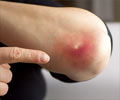Patients who use cephalosporins, fluoroquinolones, carbapenems, and lincosamides have a 12 percent high chance of hospital-associated C. difficile infections.

‘New study highlights the need for continuous monitoring of antibiotic use among patients aged above 65, patients who stay for longer duration in hospitals and in teaching hospitals.’
Read More..




C. difficile infections, which can cause life-threatening symptoms ranging from diarrhea to inflammation of the colon, affect nearly a half million patients in the United States each year causing approximately 15,000 deaths per year.Read More..
The lack of significant results for C. difficile for some classes of antibiotics may reflect reduced use through stewardship, the authors said.
"This highlights the importance of ongoing monitoring of antibiotic use in hospitals for patient safety as it relates to the effect of antibiotics on C. difficile infections. In the future it will also be important to look at the effect of antibiotic use on both C. difficile infection and antibiotic resistance simultaneously, rather than examining each piece as separate endeavors," said L. Clifford McDonald, MD, medical epidemiologist at the Centers for Disease Control and Prevention (CDC) and an author on the study.
"This is possible in our era of electronic medical records because antibiotic usage data has become more available. A facility can use the National Healthcare Safety Network Antibiotic Use and Resistance Module and interpret results using the standardized antibiotic administration ratio (SAAR) to have a better understanding of how antibiotics are being used and identify areas for improvement."
Recent guidelines identified the four classes of antibiotics examined in this study as high risk, though results of previous research evaluating facility-level use of these antibiotics and rates of C. difficile have been inconsistent. Researchers in this study analyzed microbiological and pharmacy data from 171 hospitals included in the BD Insights Research Database to look at the impact of hospital-wide use of these four classes of antibiotics on hospital-acquired C. difficile.
Advertisement
Higher C. difficile infection rates were also associated with a larger portion of patients over age 65, higher rates of community-onset C. difficile, longer length of stay, and teaching hospitals.
Advertisement












